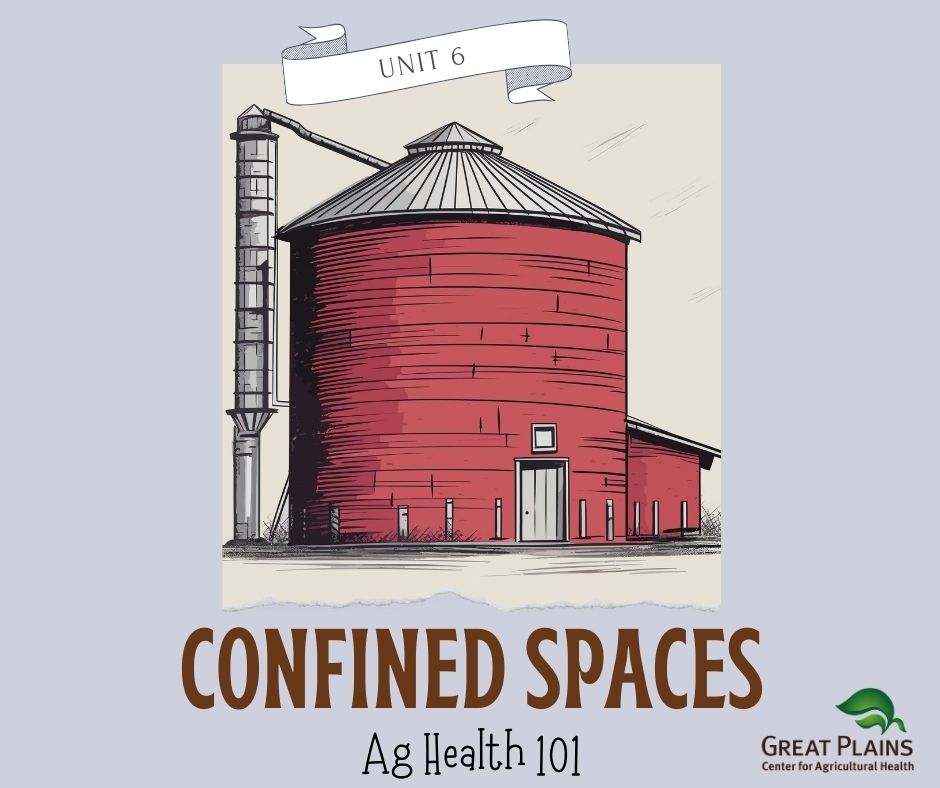
Unit 6.
Confined Spaces
This section of our conversations on Ag Health 101 will focus on different hazards associated with entry and work in confined spaces. We will define what this means, identify common spaces on the farm, and present best practices for key confined spaces, including grain bins and manure storage units.
Note: This unit is complemented by Unit 5. Air Quality and Gas Exposures.
Chapter 1: Introduction to Confined Spaces
This chapter identifies what we mean by a “confined space”. We will walk through the list of considerations to take when evaluating a space to determine if we should prevent entry as a confined space, including atmospheric hazards, engulfment hazards, sloped floors, or mechanical/electrical hazards inside that could cause injury.
Introduction to Confined Spaces
Chapter 2: Confined Space Safety: Best Practices
This chapter identifies the six steps needed to take to prevent fatalities in agricultural confined spaces. All these steps must be taken before allowing anyone to enter into the space.
Confined Space Safety: Best Practices
Chapter 3: Grain Bin Engulfment
Listeners will understand that grain storage units need to be managed as confined spaces and what hazards need to be controlled prior to entry. The processes associated with how people become buried in grain are described to highlight why the preventive steps in Chapter 4 are needed.
Grain Bin Engulfment
Chapter 4: Grain Bin Engulfment Prevention
This chapter walks you through steps to perform before entering a grain bin. It highlights turning off grain-moving equipment, personal fall arrest equipment to be worn, air quality checks prior to and throughout entry, and attendant monitoring duties.
Grain Bin Engulfment Prevention
Chapter 5: Grain Bin Rescue Tools
You will learn about tools and processes needed for a successful rescue of someone who has been partially engulfed by grain. Understanding whether local rescue services have this life-saving equipment should be important for farmers producing grains.
Grain Bin Rescue Tools
Chapter 6: Manure Storage Hazards
In this chapter, listeners will learn about hazardous gases that are a natural byproduct of manure storage. Listeners who have completed the Air Quality unit may be more comfortable with this chapter. We discuss that some gases linger after a manure storage unit has been pumped, so confined space precautions exist after these storage areas are “emptied” of liquids and solids.
Manure Storage Hazards
Bonus Chapter: Gas Monitor Use in Confined Spaces
We have a brief discussion of gas monitor selection, use, and maintenance for gas exposures on the farm. Advanced courses are available on this topic, and the GPCAH can demonstrate how to use these monitors to prevent fatal exposures to gases on the farm.
